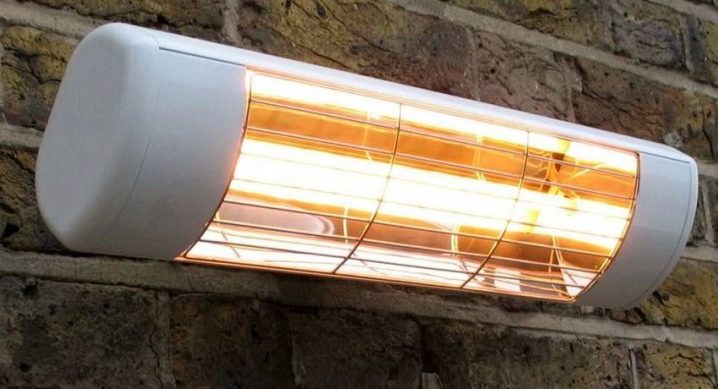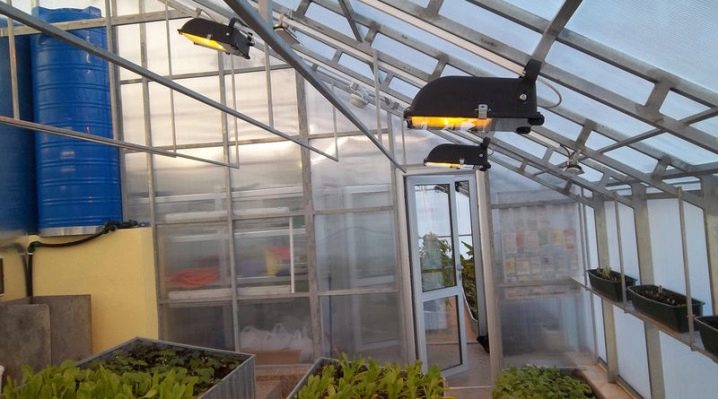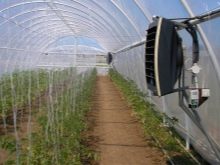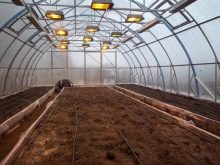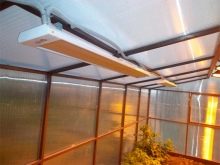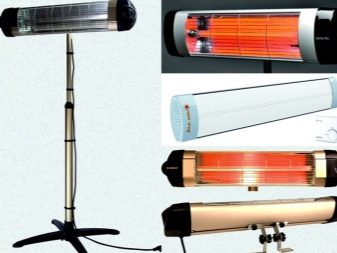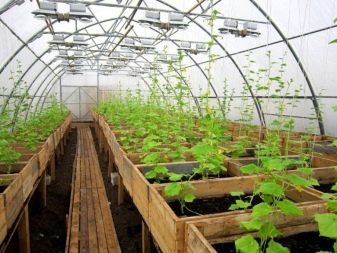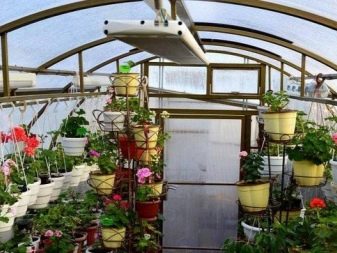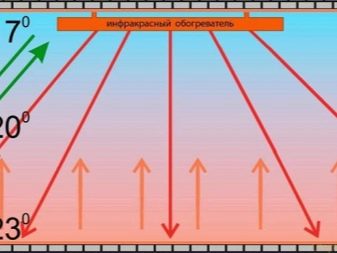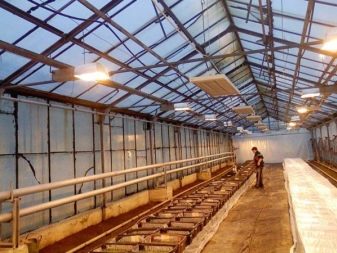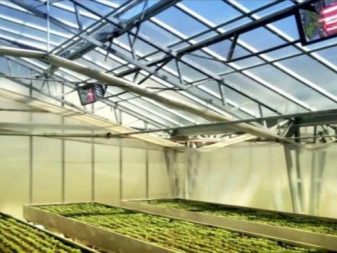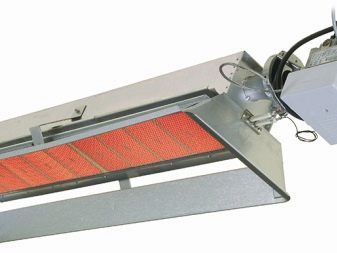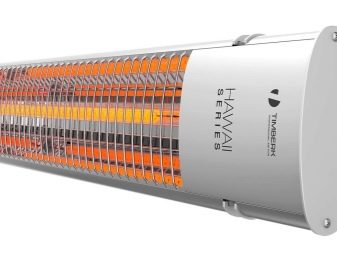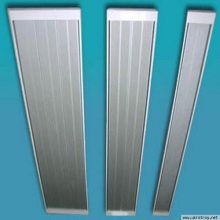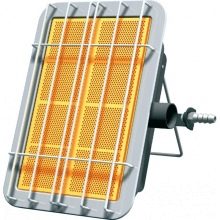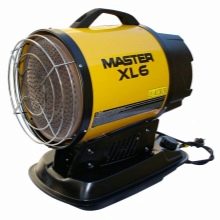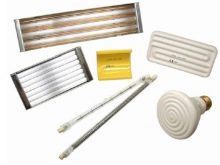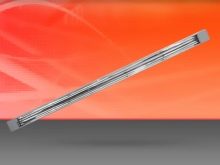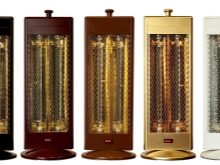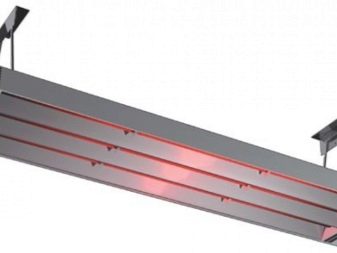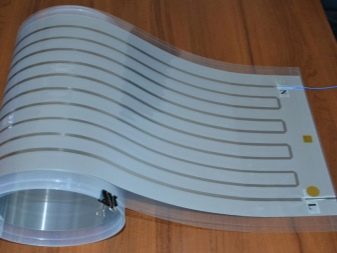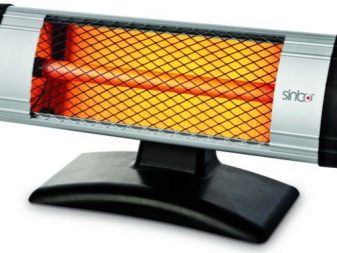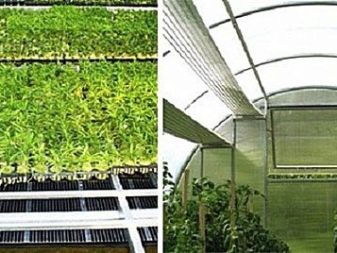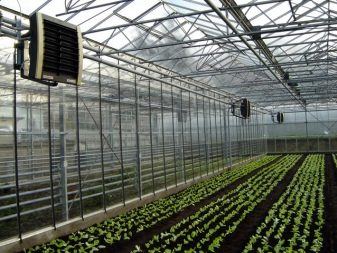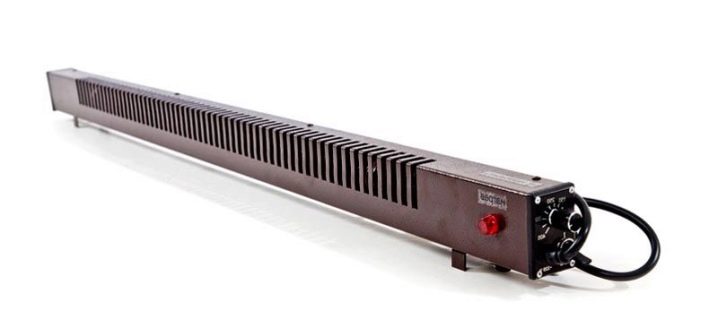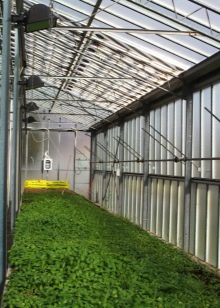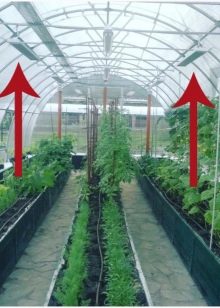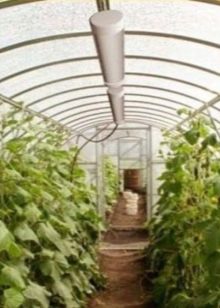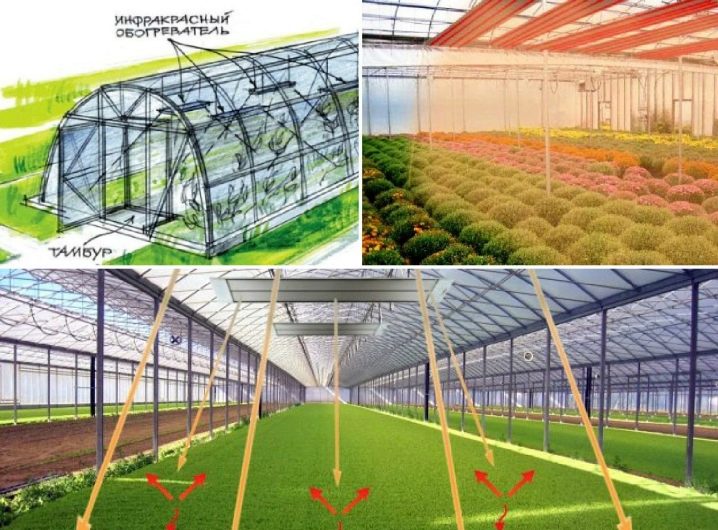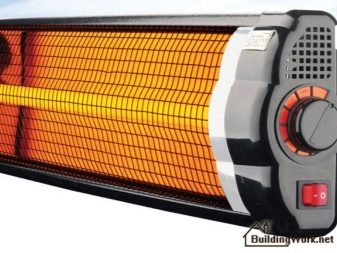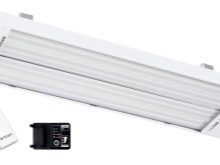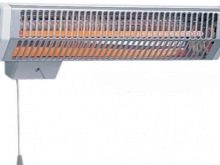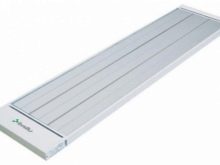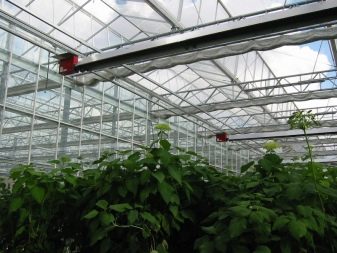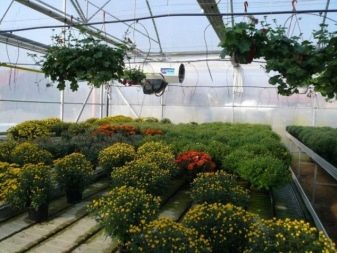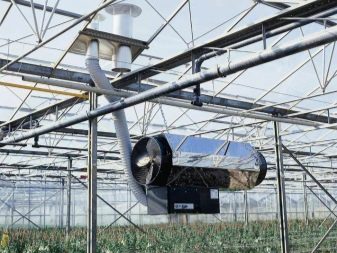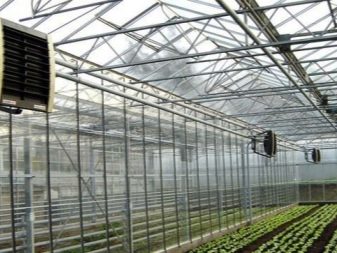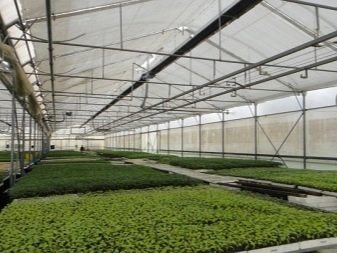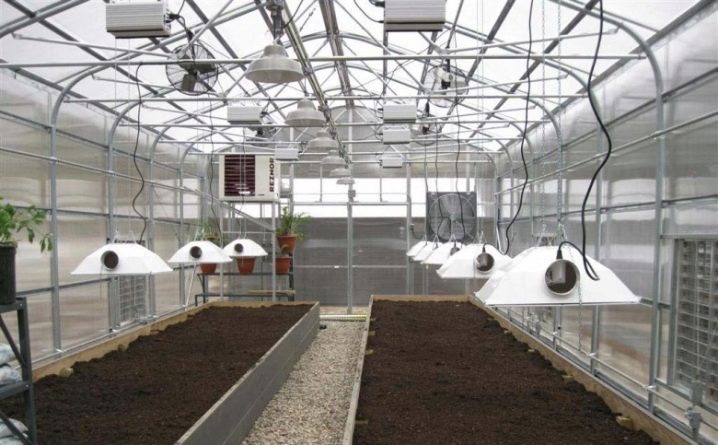Infrared heaters for greenhouses: the pros and cons
The infrared heater is a relatively young representative of climatic equipment. This useful device in record time has become popular and in demand. It is actively used for rapid local heating of the premises of various purposes - apartments, private houses, offices, garages, car washes, and building sites. It is not surprising that infrared devices attracted the attention of plant growers with the possibility of creating, with their help, optimal conditions for the livelihood of green pets grown in greenhouses and greenhouse pavilions.
Special features
Our planet has its own heater - the Sun. Due to the unimpeded passage of thermal energy emitted by it through the Earth’s air envelope, its surface warms, thereby supporting the life of all that exists.Infrared heating works on the same principle: by analogy with the sun's rays, infrared devices for greenhouses share their heat directly with the surrounding objects. A distinctive feature of infrared heaters is the flow of heat not into the air, but to the ground. This method of heating provides the optimal distribution of thermal energy in the greenhouse pavilion.
Despite its name, there is nothing difficult in the device of an infrared device. The outer side is equipped with aluminum radiating panels, protected by a steel case with a heat-resistant coating. The filling consists of a heating element and a protective earth conductor. The principle of operation of IR equipment is also simple and clear: the heating element transfers heat to the plates emitting infrared waves. This energy is then absorbed by the surface of the surrounding objects and things that are in the radius of the instrument.
Advantages and disadvantages
Greenhouse infrared heating has many advantages.
- Directionally heats and evenly heats a specific part of the room.
- Fast time of heating and distribution of heat, which is felt already at the moment of switching on the device.
- Economy of heating provides a combination of high efficiency and low thermal losses of devices. Electricity saving is about 35–70%.
- Silently works.
- Versatility - IR equipment can be used in any place, a variety of mounting methods.
- When heated, the burning of oxygen or the formation of a dusty “storm” is excluded. In the process, the dust will circulate less in the internal space of the structure and settle on the landings.
- Since heating with an infrared device eliminates the problem of dryness of the air or its burning out, stable humidity will be maintained in the greenhouse - this is one of the integral components of a healthy microclimate for full-fledged plant growth.
- Heat prevents the development of mold fungi and the formation of a favorable environment for the reproduction of garden pests. Many of them are carriers of mosaic, late blight and other infections.
- The presence of temperature sensors provides several significant advantages. For example, one corner of the greenhouse can be taken by thermophilic exotics, and the other by cultures that need coolness.
- Climatic equipment is constantly being improved. In the newest models, the flat screen has changed to a spherical one. In this case, the light fluxes have a larger scattering angle of 120 °, which contributes to the uniform distribution of heat, which benefits the plants.
- Durability and smooth operation around the clock. The constructive solution of heaters excludes moving parts, air filters and other elements that require periodic replacement or repair.
- The compact size of the devices, so they are trouble-free in transportation.
- Fire safety equipment.
- The possibility of self-assembly without the involvement of masters from the side.
Infrared heaters for greenhouses have some drawbacks.
- With economical use of the equipment itself, the organization of infrared heating is quite expensive.
- The market is replete with fakes of reputable brands. The trustful buyer is still seduced by the attractive low price and the promises that the device works “just as good” as the original.
- The need to accurately calculate the number of IR devices specifically for a particular room.It is also important to determine which models are suitable for specific needs.
Kinds
When choosing an infrared heater repelled by several criteria.
Energy source
Existing types of "infrared" can be:
- electric;
- gas (halogen);
- diesel.
Type of heating element
Electric heaters are equipped with the following types of heating elements.
- Ceramic - have increased durability, heating for them is a matter of minutes, they also cool down quickly;
- Heating elements - the advantages of tubular electric heaters consist in reliability and stable maintenance of the set temperature;
- Carbonated - the design of such a heater is represented by vacuum tubes with carbon-hydrogen fiber filler.
The form
In appearance, heaters can be an infrared lamps of various formats, film panels or tape. In comparison with lamps, the film or tapes provide the greatest economy of the electric power and warm up the soil more evenly.
Mounting method
Before buying a “personalized sun”, it’s worth resolving the issue with the device’s location.
Depending on the fastening method, the equipment can be:
- mobile;
- stationary.
Regarding the first questions there is no - it is a portable equipment, moved to the right place by means of wheels or special legs.
With the installation of stationary models, you can experiment as much as you like, since they are available in several types:
- ceiling;
- wall mounted;
- plinth;
- outboard.
Suspended models differ from the ceiling mounting principle. Suspension type heaters are built into the hinged ceiling structure, which is pre-constructed for the placement of devices. For fixing the suspension devices use special brackets and anchor bolts with a step from 5 to 7 cm.
The optimal place to accommodate plinth heaters is under the window, which contributes to the realization of their potential to the full thanks to the blocking of cold and drafts going outside.
Heating temperature
IR equipment differs in the degree of heating of the apparatus itself.
Devices can be:
- low-temperature - up to 600 ° C;
- medium temperature - from 600 to 1000 ° C;
- high temperature - more than 1000 ° C.
Devices with medium or high temperature are good in spacious and high greenhouse pavilions. In these cases, warm air is guaranteed to be able to reach the ground, and not just circulate in the middle.
Emission range
In accordance with this parameter, IR equipment is:
- longwave;
- medium wave;
- shortwave.
According to Wien’s law, there is a direct relationship between the wavelength and the temperature of the surface on which the radiation falls. Under high temperature radiation, the wavelength increases, but at the same time they acquire rigidity and become dangerous.
Light devices in the form of lamps with a maximum heat temperature of 600 ° C is good to heat large industrial greenhouses. Long-wave equipment eliminates strong heat. It is usually used in small greenhouses at the dacha.
IR heaters have additional options.
- In many models of infrared equipment, a thermostat (thermostat) is provided, which is responsible for maintaining the desired temperature.
- Any heat heater is necessarily equipped with a thermal switch that reacts to overloads and automatically switches off the device, preventing its overheating.
- To ensure all-round security, IR technology is also equipped with insulators that prevent contact of the housing with the heating element.
- Particularly advanced models have a light indication, informing the user about the problem, so that he can quickly navigate and take steps to eliminate it.
- Spontaneous disconnection of floor models occurs when overturning, which at the same time prevents breakage and reduces the risk of ignition.
- The presence of the Antifrost system is designed to protect the heater from the formation of ice. Even if the heater is operated in the harsh Russian winters, then you can not worry about the performance of IR equipment.
- Many models of infrared heaters have a timer, which makes operation much more comfortable. With the ability to set the right time on and off, you can reduce fuel costs.
How to place?
For the correct location of the heaters in the greenhouse, one should proceed from the performance of the equipment and the range of scattering of IR rays.
The organization of uniform heating infrared devices implies the observance of several conditions.
- Between the heater and the landing should be kept at least a meter distance. When germinating seedlings, the IR lamp is raised to a designated height, preferably by means of a ceiling mount.
- As the seedlings grow, the distance is increased by moving the lamp up. You can simplify the task by using less powerful lightweight structures on hangers.
- With a greater distance from the heater to the ground, the ground is cooler, but at the same time the device can heat a large area with plantings.
Therefore, when planning planting, you need to be guided by the needs of plants, and only then think about how to save energy.
- In a greenhouse, heaters must be installed at least half a meter. If the area of the greenhouse pavilion is 6 m, then two-three devices should suffice. In a large greenhouse, it is wise to place heaters in a “chessboard” in order to prevent the formation of inaccessible heating sites.
- Heater color. The heating of greenhouses in winter with gas infrared heaters of the ceiling type showed the following. Light emitters, where the flask is heated above 600 ° C, are the most practical to heat large rooms,using appliances as the main sources of heating. With the help of dark radiators, it is optimal to heat the winter greenhouses.
Tips
To find out which equipment is better, you should familiarize yourself with the conventional classification of climate technology of this type.
- Scope of application. Installations are industrial and for domestic use. The latter are heated small-sized structures. Although some gardeners practice the use of factory units on home plots. Most of these devices emit short waves, contributing to enhanced development and growth of plantations, but adversely affect the well-being of man.
- Fuel. In cases of engaging in greenhouse business, the purchase of electric emitters is a disadvantageous investment, since the energy consumption is too great. A rational solution is to heat large pavilions with gas infrared equipment.
- Fixation method. Infrared equipment used to heat industrial greenhouses is mounted to the ceiling, and for household models it is provided with tripods or attached to walls.
- Productive capacity. Before purchasing the installation, you need to decide on the right amount of IR technology. One industrial unit can heat a maximum of 100 m². Household infrared panels with a relatively small capacity can heat the ground up to 20 m².
Reviews
Analysis of reviews of owners of infrared heaters showed that most of them do not regret their purchase.
The benefits of users include:
- reasonable price;
- energy savings;
- heating rate;
- thermal effect;
- silent work;
- do not dry the air;
- enhanced growth of seedlings next to the device;
- compactness and mobility.
Some users blame themselves for refusing to retrofit the device with a thermostat, which the seller strongly advised. If we talk about cons, then you should pay attention to the cost of products. Latest news available at a high price, but they are equipped with a large number of additional options.
How to further heat the greenhouse, see the following video.
